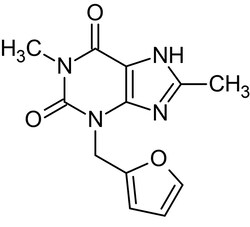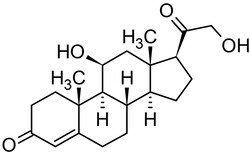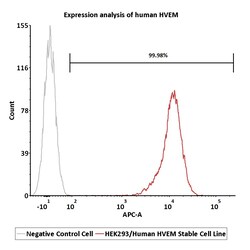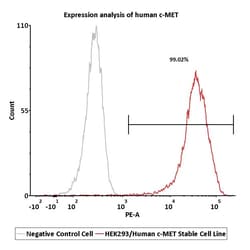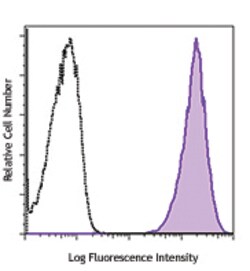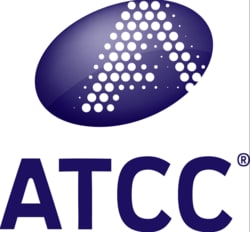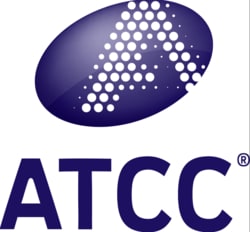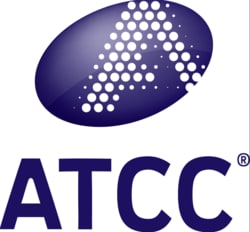
Cell Line Lysates
- (1)
- (1)
- (100)
- (2)
- (43)
- (26)
- (2)
- (1)
- (2)
- (1)
- (7)
- (3)
- (4)
- (8)
- (3)
- (1)
- (1)
- (1)
- (2)
- (2)
- (1)
- (1)
- (3)
- (2)
- (2)
- (1)
- (1)
- (1)
- (3)
- (2)
- (2)
- (5)
- (8)
- (1)
- (15)
- (11)
- (2)
- (4)
- (1)
- (2)
- (3)
- (2)
- (3)
- (2)
- (1)
- (1)
- (6)
- (2)
- (1)
- (1)
- (2)
- (3)
- (1)
- (17)
- (2)
- (14)
- (16)
Filtered Search Results
Abcam Ferulic acid methyl ester, Antio x idant agent, 5G
MW 208.21 Da, Purity >99%. Antioxidant agent. Ferulic acid (ab141932) derivative. Putative chemotherapeutic agent. Shows antithrombotic effects in vivo. .
The product is subject to the following: Abcam Restricted Use Statement

Non-distribution item offered as a customer accommodation; additional freight charges may apply.
Learn More
Abcam Furafylline, PDE inhibitor, 5MG
MW 260.25 Da, Purity >98%. PDE inhibitor. Selective cytochrome P450IA2 inhibitor (IC₅₀ = 2.4 μM). Methyl xanthine derivative. Shows an expanded duration of action compared to theophylline (ab142599) in vivo. Orally active.
The product is subject to the following: Abcam Restricted Use Statement

Non-distribution item offered as a customer accommodation; additional freight charges may apply.
Learn More
Abcam Corticosterone, endogenous steroid hormone, 50MG
MW 346.5 Da, Purity >98%. Potent endogenous glucocorticoid and mineralocorticoid receptor agonist (EC₅₀ = 20 nM, GR). Induces apoptosis. Modulates carbohydrate, potassium, and sodium metabolism in vivo. Blood-brain barrier permeable.
The product is subject to the following: Abcam Restricted Use Statement

Non-distribution item offered as a customer accommodation; additional freight charges may apply.
Learn More
ACROBiosystems HEK293/Human LDL R Stable Cell Line
Low-Density Lipoprotein (LDL) Receptor is also known as LDLR, FH, FHC, LDLCQ2, and is a mosaic protein of ~840 amino acids (after removal of signal peptide) that mediates the endocytosis of cholesterol-rich LDL. It is a cell-surface receptor that recognizes the apoprotein B100 which is embedded in the phospholipid outer layer of LDL particles. The receptor also recognizes the apoE protein found in chylomicron remnants and VLDL remnants (IDL). It belongs to the Low density lipoprotein receptor gene family. LDL receptor complexes are present in clathrin-coated pits (or buds) on the cell surface, which when bound to LDL-cholesterol via adaptin, are pinched off to form clathrin-coated vesicles inside the cell. This allows LDL-cholesterol to be bound and internalized in a process known as endocytosis and prevents the LDL just diffusing around the membrane surface. This occurs in all nucleated cells (not erythrocytes), but mainly in the liver which removes ~70% of LDL from the circulation.

Non-distribution item offered as a customer accommodation; additional freight charges may apply.
Learn More
ACROBiosystems HEK293/Human HVEM Stable Cell Line
Herpesvirus entry mediator (HVEM) is also known as TNFRSF14, TR2 (TNF receptorlike molecule) and ATAR (another TRAF associated receptor), is a type I membrane protein belonging to the TNF/NGF receptor superfamily. HVEM expression has been detected in peripheral blood T cells, B cells, monocytes and in various tissues enriched in lymphoid cells. The extracellular domain of HVEM has been shown to interact directly with the herpes simplex virus envelope glycoprotein D (gD). Two TNF superfamily ligands, including the secreted TNFβ (lymphotoxin α) and the membrane protein LIGHT (lymphotoxins, exhibits inducible expression, and competes with HSV glycoprotein D for HVEM, a receptor expressed by T lymphocytes), have been shown to be the cellular ligands for HVEM. Besides HVEM, LIGHT can also interact with LTβR, the receptor for lymphotoxin αβ heterotrimer. The role of the HVEM LIGHT /LTβ receptor ligand pair in immune function and herpesvirus pathobiology remains to be elucidated.

Non-distribution item offered as a customer accommodation; additional freight charges may apply.
Learn More
ACROBiosystems HEK293/Human c-MET Stable Cell Line
Hepatocyte growth factor receptor (HGFR) is also known as mesenchymal-epithelial transition factor (MET), c-Met, and is a glycosylated receptor tyrosine kinase that plays a central role in epithelial morphogenesis and cancer development. HGFR protein possesses tyrosine-kinase activity. The primary single chain precursor protein is post-translationally cleaved to produce the alpha and beta subunits, which are disulfide linked to form the mature receptor. HGFR is normally expressed by cells of epithelial origin, while expression of HGF is restricted to cells of mesenchymal origin. Upon HGF stimulation, HGFR induces several biological responses that collectively give rise to a program known as invasive growth. Abnormal HGFR activation in cancer correlates with poor prognosis, where aberrantly active HGFR triggers tumor growth, formation of new blood vessels (angiogenesis) that supply the tumor with nutrients, and cancer spread to other organs (metastasis). HGFR is deregulated in many ty

Non-distribution item offered as a customer accommodation; additional freight charges may apply.
Learn More
Biolegend Alexa FluorR 647 anti-human Si
Alexa Fluor 647 anti-human Sialyl Lewis X (dimeric) [FH6]; Isotype: Mouse IgM, κ; Reactivity: Human; Apps: FC; Size: 25 tests

Non-distribution item offered as a customer accommodation; additional freight charges may apply.
Learn More
ATCC Jurkat, Clone E6-1; Acute T Cell Leukemia; Human (Homo sapiens)
Jurkat, Clone E6-1 is a clone of the Jurkat-FHCRC cell line, a derivative of the Jurkat cell line, which was established from the peripheral blood of a 14-year-old, male, acute T-cell leukemia patient. This cell line can be used in immune system disorder research and immunology and immuno-oncology research.

Non-distribution item offered as a customer accommodation; additional freight charges may apply.
Learn More
ATCC NCI-H1755; Lung Adenocarcinoma; Human (Homo sapiens)
NCI-H1755 [H1755] is a cell line exhibiting epithelial morphology that was isolated from the lungs of a 65-year-old White, female patient with non-small cell lung cancer: adenocarcinoma. This product has applications in cancer research.

Non-distribution item offered as a customer accommodation; additional freight charges may apply.
Learn More
ATCC NCI-H1975; Lung Adenocarcinoma; Human (Homo sapiens)
NCI-H1975 [H-1975, H1975] is a cell line exhibiting epithelial morphology that was isolated in 1988 from the lungs of a nonsmoking female with non-small cell lung cancer. Use these cells in immuno-oncology and lung cancer research.

Non-distribution item offered as a customer accommodation; additional freight charges may apply.
Learn More
ABCLONAL SCIENCE INC ACSL1 RABBIT POLYMAB
 Small and Specialty Supplier Partner
Small and Specialty Supplier Partner
Small and/or specialty supplier based on Federal laws and SBA requirements.
Learn More

Small and/or specialty supplier based on Federal laws and SBA requirements.
Learn More
50-000-05191 ACSL1 RABBIT POLYMAB

Non-distribution item offered as a customer accommodation; additional freight charges may apply.
Learn More
Rockland Immunochemicals MDA-MB-231 Whole Cell Lysate - W09-001-GK6
 Small and Specialty Supplier Partner
Small and Specialty Supplier Partner
Small and/or specialty supplier based on Federal laws and SBA requirements.
Learn More

Small and/or specialty supplier based on Federal laws and SBA requirements.
Learn More
Multi-purpose MDA-MB-231 Whole Cell Lysates produced by Rockland Immunochemicals are derived from cell lines using highly refined extraction protocols to ensure exceptionally high quality, protein integrity and lot-to-lot reproducibility. All extracts are tested by SDS-PAGE using 4-20% gradient gels.

Non-distribution item offered as a customer accommodation; additional freight charges may apply.
Learn More
Sino Biological Mouse FCGRT & B2M Heterodimer Protein, Endotoxin-Free 100µg
A DNA sequence encoding the extracellular domain (Met 1-Ser 297) of mouse FCGRT (Q61559) was fused with a polyhistidine tag at the C-terminus, constructed the plasmid 1; A DNA sequence encoding the mouse B2M (P01887,105Ala/Asp) (Met 1-Met 119) constructed the plasmid 2. The two plasmids were co-expressed and the FCGRT / B2M heterodimer was purified

Non-distribution item offered as a customer accommodation; additional freight charges may apply.
Learn More
Sino Biological CHAK1 (TRPM7), Active 10µg
Recombinant human CHAK1 (TRPM7) (1158-1865) was expressed by baculovirus in Sf9 insect cells using an N-terminal GST tag.

Non-distribution item offered as a customer accommodation; additional freight charges may apply.
Learn More
Sino Biological Human CCR7/CD197 Protein (VLP, Flag Tag) 100µg
A DNA sequence encoding the Human CCR7-VLP (Full Length) (P32248) (Met1-Leu344, thermostabilizing mutations) was fused with a flag tag at the C-terminus. This protein was prepared using our VLP platform.As an innovative technology platform, VLPs are generated through the self-assembly of viral proteins in HEK293 cells. This process efficiently integrates membrane proteins onto the VLP surface, preserving their native conformation and yielding soluble, high-concentration proteins that are ideally suited for immunization and antibody screening.

Non-distribution item offered as a customer accommodation; additional freight charges may apply.
Learn More

